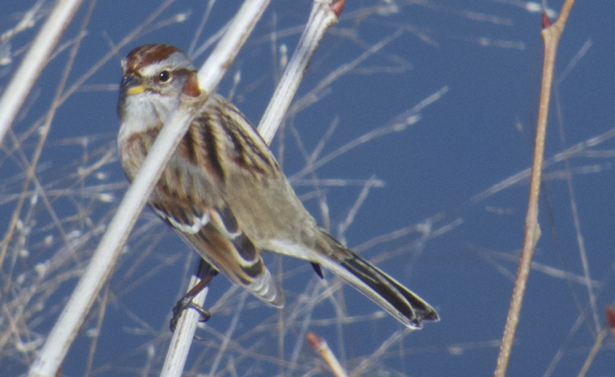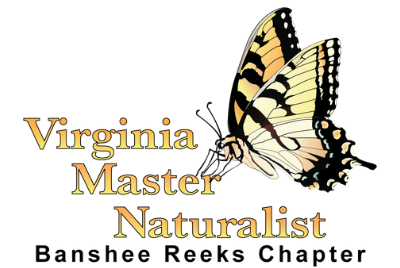American Tree Sparrows

Sparrows are often given a bum rap. Many birders will call them ‘little brown
jobs’ because of how hard they can be to identify. But if you dive into the details on
sparrows, you’ll find some serious beauty. One of my favorite sparrows is the
American Tree Sparrow (Spizella arborea). It is a Loudoun county winter visitor; you
can see it here from November to March. According to eBird reports, it is rarely
spotted – there are only a half dozen reports for last year. There must be more to
be spotted, but perhaps too many birders are passing them by.
The American Tree Sparrow (ATSP is the banding code) sports a rusty cap,
bi-colored bill (black on top, yellow on the bottom), and two white wing bars. The
bird shown here was seen during the Seneca area CBC on the Trump National golf
course. As is common and despite its name, this bird was seen close to the ground
among some grasses and shrub thickets. Supposedly the American Tree Sparrow
was named after Eurasian Tree Sparrows based on their appearance by European
settlers, leading to a bird that habits the ground ending up with tree in its name.
The ATSP breeds in the far northern tundra of Alaska and the Northwest
Territories. Fortunately, this far north is relatively little impacted by human
behavior, so they are considered a species of least concern with a healthy
population. On their breeding grounds, insects are the food of choice for the protein
content, but when they are here, they mostly feed on sedges, grasses and seeds. In
fact, they are known to occasionally show up at home feeders. According to Project
FeederWatch, they like most of the common feeder foods, including sunflower
seeds, crackled corn, peanut hearts and Nyjer.
So next time you are out birding in the winter, look around for the beautiful
coloring of American Tree Sparrow in the fields amongst the Song and White-
throated Sparrows.
